Rabu, Mac 26, 2014
Simpton serangan serangga "Spring Tail"
Maiselium seolah-olah hilang atau berundur ke belakang bukan hama tetapi springtail. Carta kawal ialah dengan cara kawal hama.
1. Buang segera beg-beg yang menampakkan simptom diserang. Sebaiknya kukus balik supaya telur, ibu, anak yag ada dalam beg tu mati (tumpang kukus dengan beg yang baru)
2. Sembur beg-beg yang tinggal dengan racun organik seperti cuka kayu dan apa-apa yang didakwa boleh membunuh mite/serangga..
3. Boleh juga gunakan klorok/air kapur tetapi kena basuh dengan saline / air garam sebelum beg keluar hasil...
4. Tanyalah juga petua kekawan yang dah banyak pengalaman....
Jumaat, Mac 21, 2014
Projek cendawan global di Johor pun bermula
Alhamdulillah..bermula bulan Mac 2014, Cendawan Global memulakan projek cendawan di Kota Tinggi, Johor. Target pengeluaran ialah sebanyak 20,000 bongkah untuk permulaan dan akan ditambah jumlah bongkah dari masa ke semasa berdasarkan sambutan dan permintaan daripada pelanggan.
Kami juga menwarkan tempahan bongkah untuk bakal pengusaha cendawan di seluruh Malaysia dan khusunya buat warga Johor yang berdekatan. Apabila siap pada bulan depan, kami akan buka pintu seluas-luasnya untuk anda datang dan melawat ladang kami. Kehadiran anda amat dialu-alukan.
Adik, salah seorang krew kami sedang beraksi. Beliau sedang menguji skil mengimbangkan diri.
Saya dengan gaya je yang lebih, hehe.
Gambar rumah cendawan. Empat buah daripada enam buah keseluruhannya. Boleh memuyatkan sehingga 60,000 bongkah cendawan.
Untuk pertanyaan dan maklumat lanjut boleh hubungi saya / whatsapp di 019-7589774 (Nizam) atau emailkan ke nizamsky@gmail.com
Khamis, Mac 20, 2014
Every Type Of Mushroom You Need To Know About
Where do we begin with mushrooms?
They run the gamut from beautiful to grotesque. They can even be magical. They have the ability to add a depth of flavor to our dishes that is otherwise unattainable. But most of us buy mushrooms at the store not really understanding the difference between the big brown ones and the tiny little white ones.
For some of us, this means that we occasionally pick up a new variety and throw it into a home-cooked dish. For others it means we just stick to what we know -- the good ol' tried-and-true white button mushroom. And while there is nothing wrong with this common mushroom, it's just, well, a bit boring at times. Now that most grocery stores have the meaty shiitake and the floral chanterelle so readily available to us, how can we not take this opportunity for some culinary exploration?
Mushrooms shouldn't be a mystery, so instead of keeping you in the dark, we're shedding some light on our fungus friends. Here's our guide to every kind of mushroom you need to know about:
They run the gamut from beautiful to grotesque. They can even be magical. They have the ability to add a depth of flavor to our dishes that is otherwise unattainable. But most of us buy mushrooms at the store not really understanding the difference between the big brown ones and the tiny little white ones.
For some of us, this means that we occasionally pick up a new variety and throw it into a home-cooked dish. For others it means we just stick to what we know -- the good ol' tried-and-true white button mushroom. And while there is nothing wrong with this common mushroom, it's just, well, a bit boring at times. Now that most grocery stores have the meaty shiitake and the floral chanterelle so readily available to us, how can we not take this opportunity for some culinary exploration?
Mushrooms shouldn't be a mystery, so instead of keeping you in the dark, we're shedding some light on our fungus friends. Here's our guide to every kind of mushroom you need to know about:
-
1: Chanterelles  It's easy to believe that these mushrooms offer a slight floral note -- just the looks of them would suggest that. Chanterelles, which are known for their striking golden color (but also come in different shades), are fruity and peppery.They are delicate in flavor and texture, work well as an entree topping and also pair nicely with eggs. Chanterelles last longer than most mushrooms in the fridge -- up to 10 days. They have a high moisture content, so when cooked they should be prepared in a dry saute, as they will quickly release their own water.
It's easy to believe that these mushrooms offer a slight floral note -- just the looks of them would suggest that. Chanterelles, which are known for their striking golden color (but also come in different shades), are fruity and peppery.They are delicate in flavor and texture, work well as an entree topping and also pair nicely with eggs. Chanterelles last longer than most mushrooms in the fridge -- up to 10 days. They have a high moisture content, so when cooked they should be prepared in a dry saute, as they will quickly release their own water. -
2 : Cremini 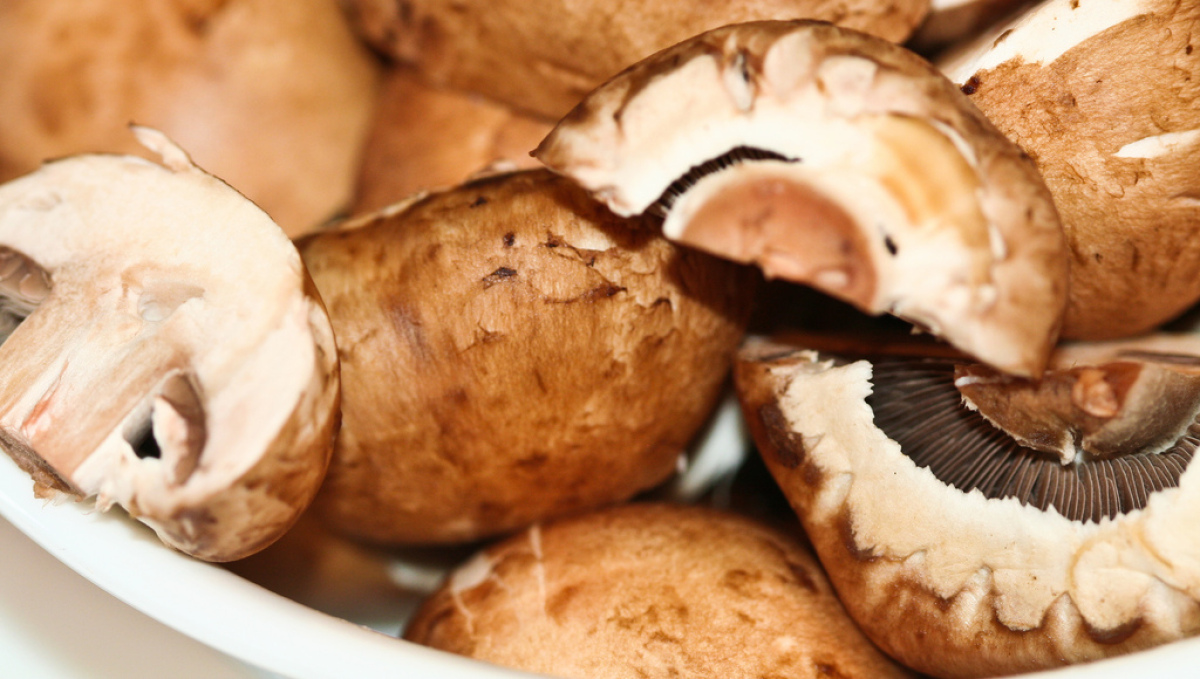 Creminis, also sold as baby portobellos, are just a more mature white button mushroom. They are similar in shape, maybe slightly bigger in size, but one discernable difference is their color -- creminis are a light shade of brown. They are a mild mushroom in flavor, and make a great substitute for white buttons in your favorite recipes as they add a deeper flavor.
Creminis, also sold as baby portobellos, are just a more mature white button mushroom. They are similar in shape, maybe slightly bigger in size, but one discernable difference is their color -- creminis are a light shade of brown. They are a mild mushroom in flavor, and make a great substitute for white buttons in your favorite recipes as they add a deeper flavor. -
3 : Morels  It may not look pretty, but this mushroom is super savory and delicious. While it may look like a dead honeycomb, it's alive with flavor and worth getting over your fear of the ugly for. The pop up in the spring in and on the edges of forests and may sell for up to $20 a pound. They a little chewy and taste great sautéed with butter.
It may not look pretty, but this mushroom is super savory and delicious. While it may look like a dead honeycomb, it's alive with flavor and worth getting over your fear of the ugly for. The pop up in the spring in and on the edges of forests and may sell for up to $20 a pound. They a little chewy and taste great sautéed with butter. -
4 : Portobello 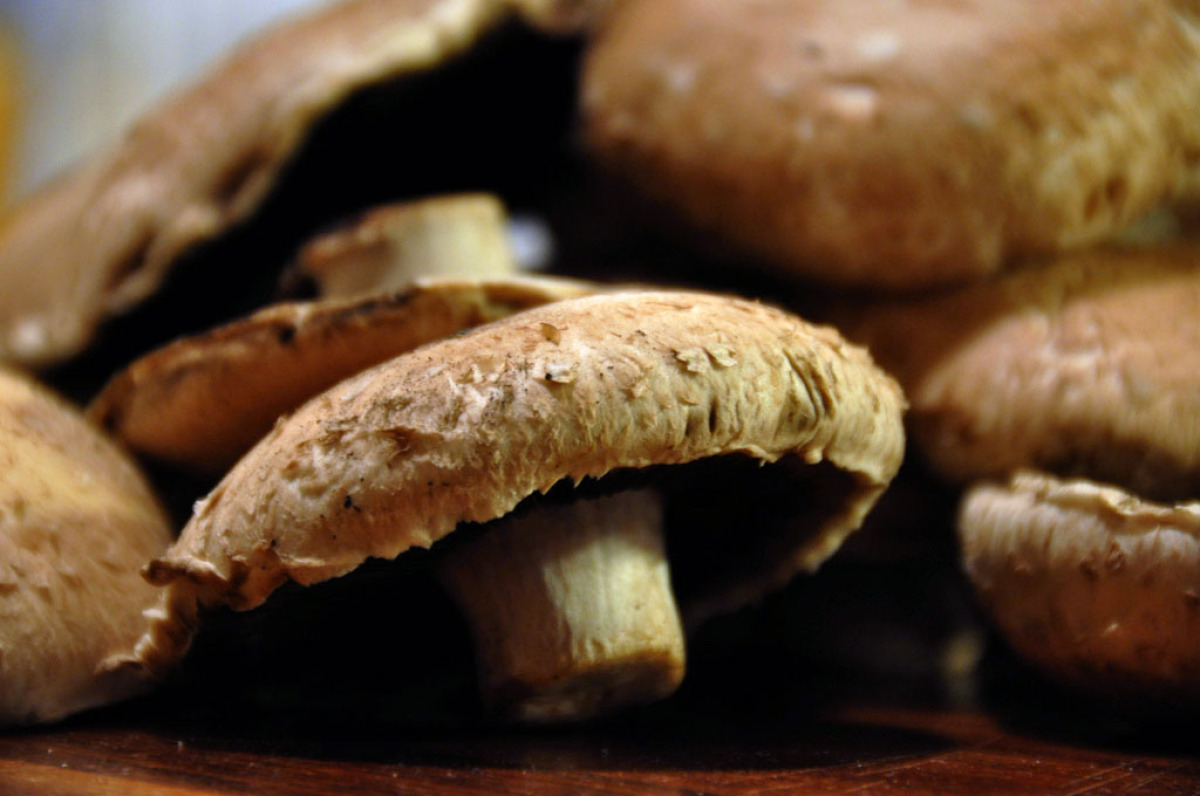 If you like button mushrooms, then making your way to portobellos should be an easy step. This mushroom is the most mature stage of the white button mushroom, with its cap fully grown out. The portobello is mild in flavor, but has a meaty texture. It works great as a substitute for meat in certain dishes, and is particularly deletable when grilled.
If you like button mushrooms, then making your way to portobellos should be an easy step. This mushroom is the most mature stage of the white button mushroom, with its cap fully grown out. The portobello is mild in flavor, but has a meaty texture. It works great as a substitute for meat in certain dishes, and is particularly deletable when grilled. - 5 : Enoki
 These mushrooms have long stems and little caps. At first glance, they kind of look like bean sprouts, but they have way more flavor. They're common in Asian cooking, and are available fresh and canned. Because they're crisp, they hold up well in soups and go nicely in salads. They're native to Japan and really delicious.
These mushrooms have long stems and little caps. At first glance, they kind of look like bean sprouts, but they have way more flavor. They're common in Asian cooking, and are available fresh and canned. Because they're crisp, they hold up well in soups and go nicely in salads. They're native to Japan and really delicious. -
6 : Shiitake 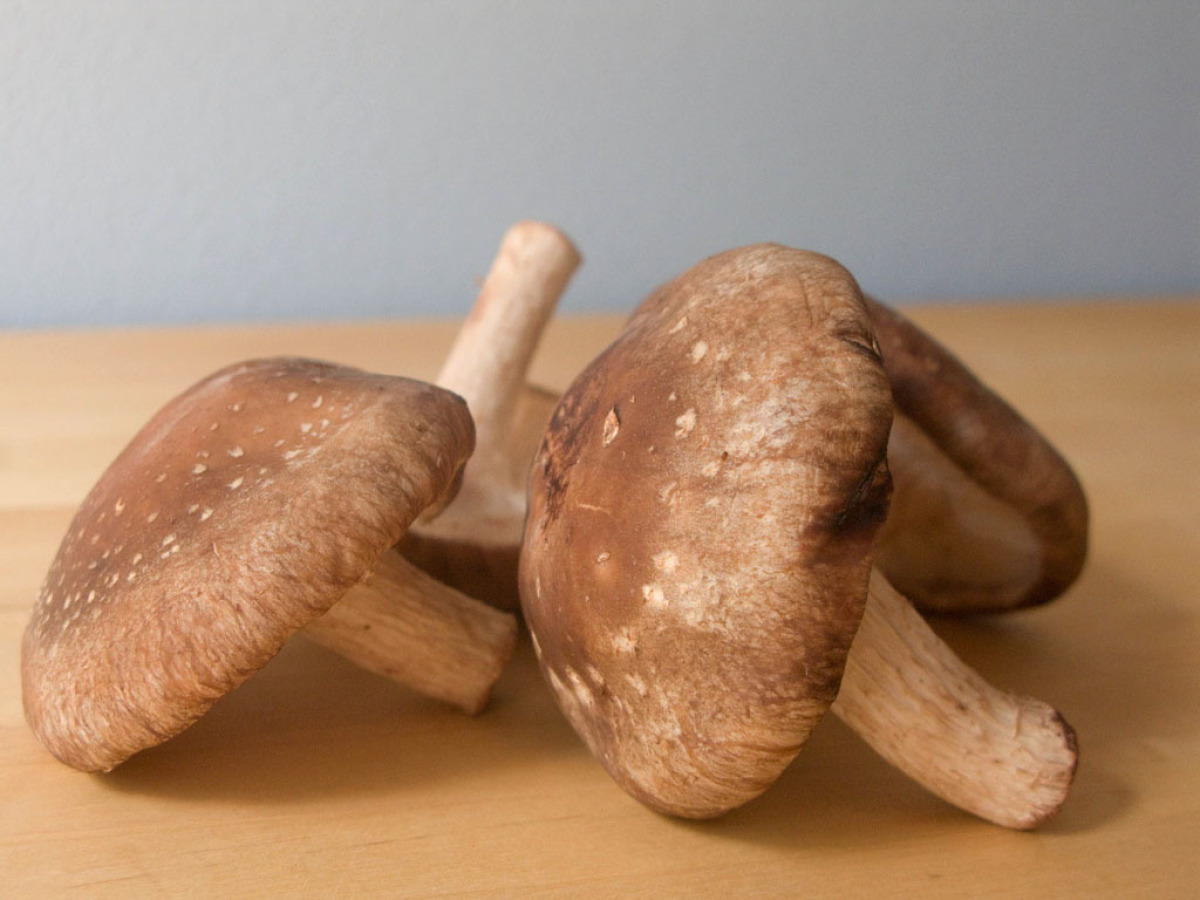 Shiitake mushrooms grow mainly in Japan, China and Korea, which is one of the reasons why they are so predominant in Asian cuisine. They are savory and meaty, and add an umami flavor to dishes. Shiitakes can be used to top meat dishes and to enhance soups and sauces. And if you can't find the shiitake at your supermarket but still want the flavor, look for it in powder form.
Shiitake mushrooms grow mainly in Japan, China and Korea, which is one of the reasons why they are so predominant in Asian cuisine. They are savory and meaty, and add an umami flavor to dishes. Shiitakes can be used to top meat dishes and to enhance soups and sauces. And if you can't find the shiitake at your supermarket but still want the flavor, look for it in powder form. -
7 : Oyster 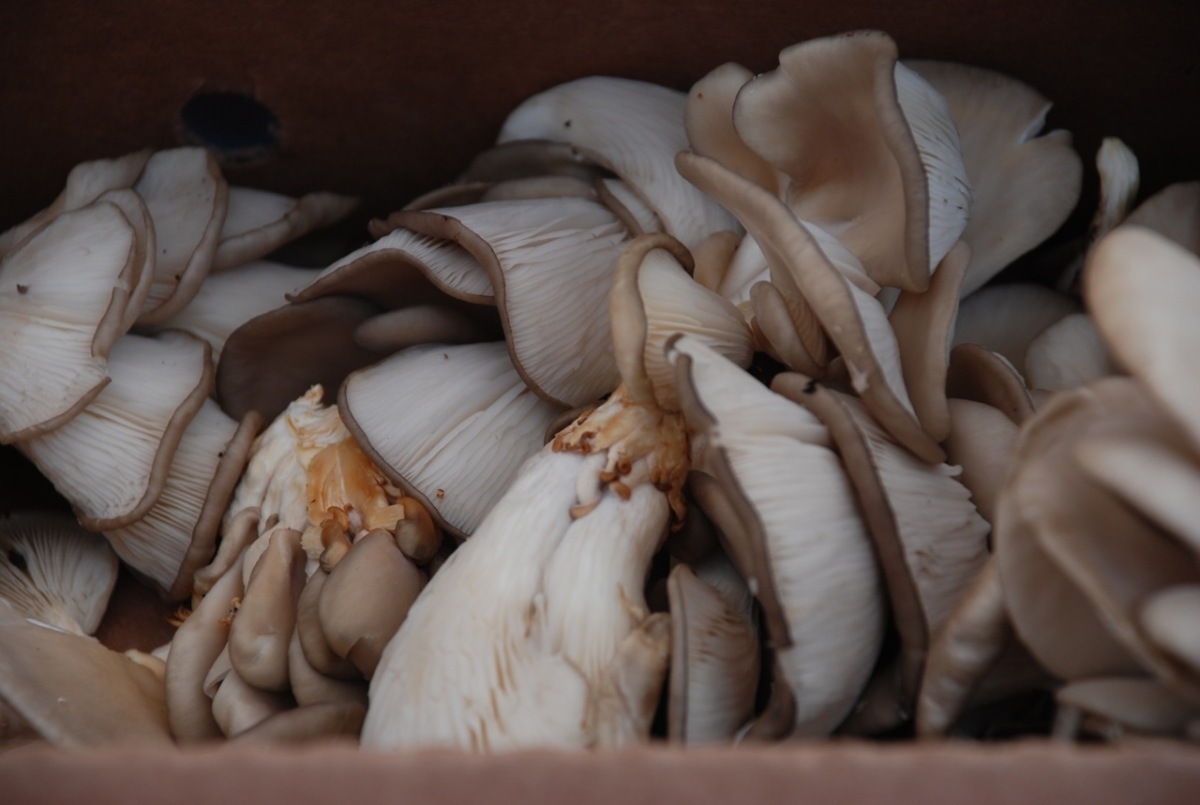 Oysters may be one of the more intimidating mushrooms in appearance, since they look nothing like the common button mushroom. But fear them not -- they are simple to prepare and offer a delicate and sweet flavor. Depending on the time of year they are foraged, oysters can even offer an anise-like taste. This mushroom, which got its common name due to its resemblance to the water bivalve molluscs, can be easily cultivated, making it one of the more affordable mushroom varieties.
Oysters may be one of the more intimidating mushrooms in appearance, since they look nothing like the common button mushroom. But fear them not -- they are simple to prepare and offer a delicate and sweet flavor. Depending on the time of year they are foraged, oysters can even offer an anise-like taste. This mushroom, which got its common name due to its resemblance to the water bivalve molluscs, can be easily cultivated, making it one of the more affordable mushroom varieties. -
8 : Button 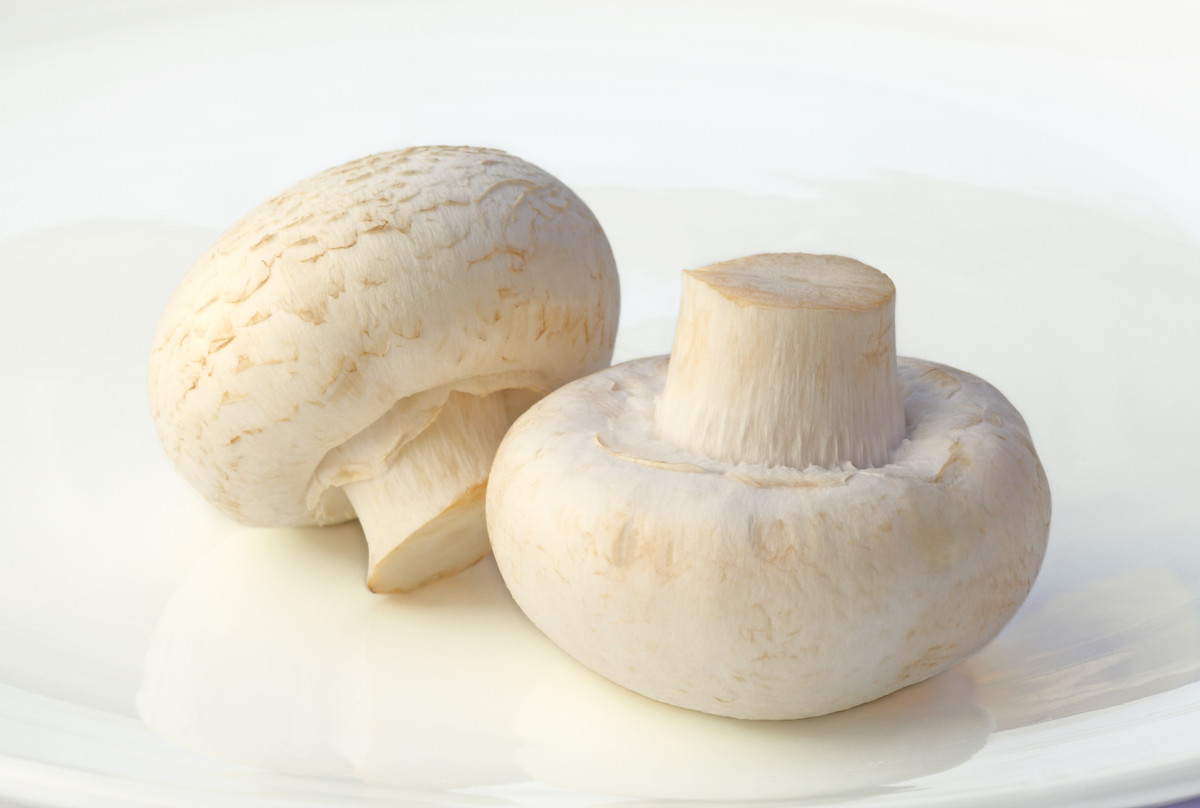 Also known as white mushrooms, button mushrooms are the most common type you'll find in the supermarket. They're harvested when they're young and have a very subtle, earthy flavor and are available year-round.
Also known as white mushrooms, button mushrooms are the most common type you'll find in the supermarket. They're harvested when they're young and have a very subtle, earthy flavor and are available year-round. -
9 : Porcini 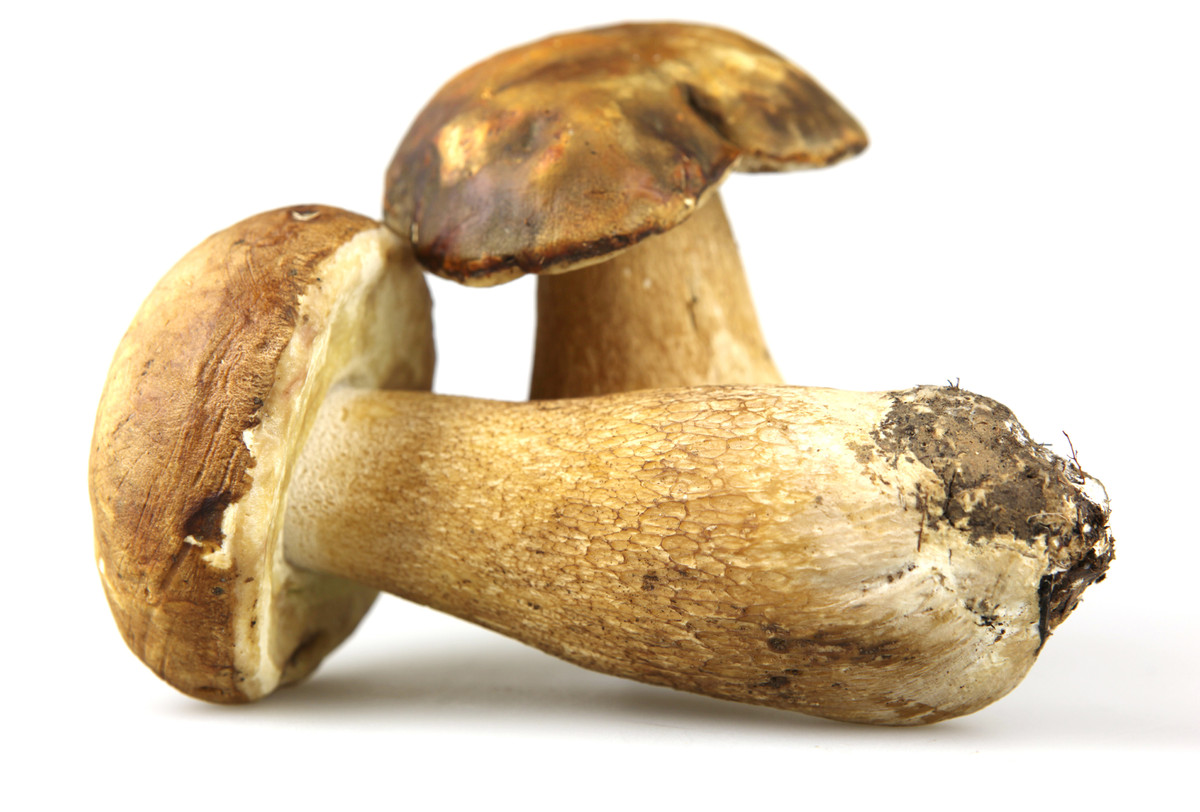 A meaty mushroom similar to the portobello, the porcini is often used in Italian cuisine. It's slightly nutty and creamy and has an aroma that has been likened to sourdough. Light brown in color, porcinis can range from one inch to 10 inches across. They're sold fresh, dried and canned. If you're using dried porcinis, soak them in hot water for at least 15 minutes before cooking with them.
A meaty mushroom similar to the portobello, the porcini is often used in Italian cuisine. It's slightly nutty and creamy and has an aroma that has been likened to sourdough. Light brown in color, porcinis can range from one inch to 10 inches across. They're sold fresh, dried and canned. If you're using dried porcinis, soak them in hot water for at least 15 minutes before cooking with them. -
10 : Hen Of The Woods 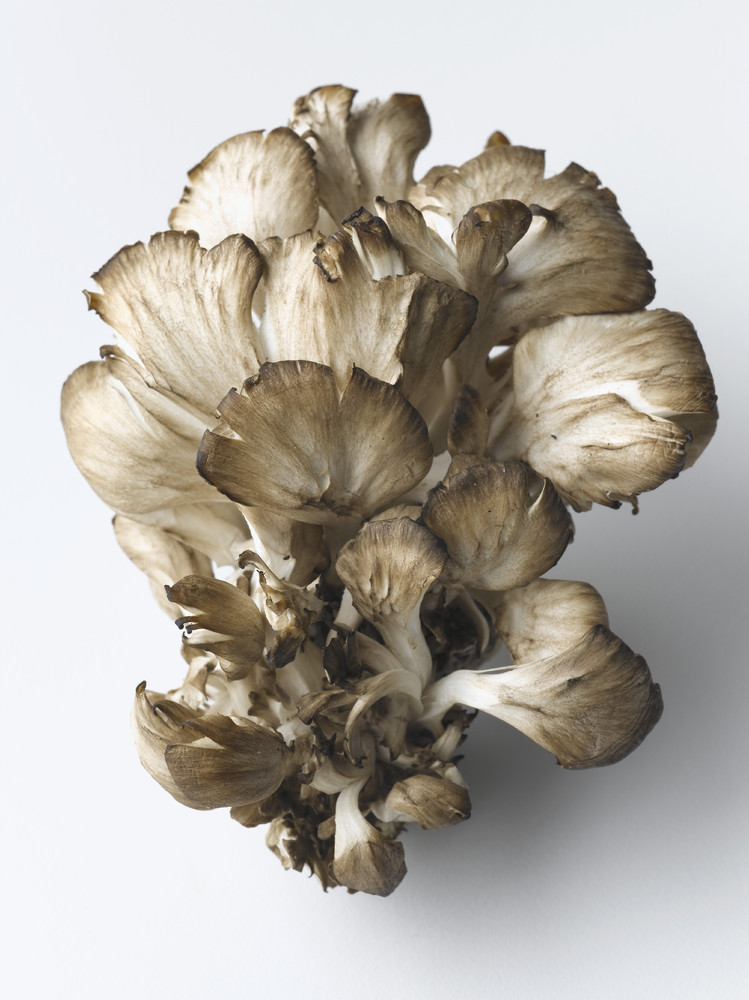 Also known as maitake -- which translates to "dancing mushrooms" in Japanese -- these delicate, flowery mushrooms are packed with flavor. They're rich, earthy and pretty dreamy. They grow at the base of trees, particularly oaks, and are used in Japanese and western cooking. They hold their shape well when cooked, so they're great for soups and stir-fries.source : http://www.huffingtonpost.com/2014/03/19/types-of-mushrooms_n_4994638.html
Also known as maitake -- which translates to "dancing mushrooms" in Japanese -- these delicate, flowery mushrooms are packed with flavor. They're rich, earthy and pretty dreamy. They grow at the base of trees, particularly oaks, and are used in Japanese and western cooking. They hold their shape well when cooked, so they're great for soups and stir-fries.source : http://www.huffingtonpost.com/2014/03/19/types-of-mushrooms_n_4994638.html
Ahad, Mac 16, 2014
Kursus Kawalan Penyakit Cendawan
Assalam.
Berita baik buat pengusaha cendawan di kawasan Besut, Terengganu kerana Jabatan Pertanian Besut akan menganjurkan kursus kawalan penyakit cendawan pada tarikh, tempat dan masa seperti di atas.
Masuk adalah PERCUMA dan saya juga menjemput kepada bakal pengusaha cendawan untuk hadir pada kursus ini kerana ini adalah peluang terbaik untuk berkenalan dengan pengusaha cendawan berpengalaman dan juga bertukar-tukar maklumat. Jumpa anda di sana!
Isnin, Mac 03, 2014
Could mushrooms be the cure for cancer?
Mushrooms are being hailed as a miracle cure for cancer. But can a shiitake stir-fry really work wonders?
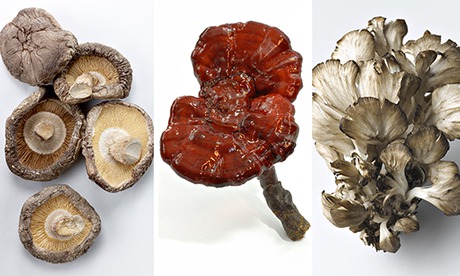
From left: shiitake, reishi and maitake mushrooms. Photograph: Getty/Alamy

From left: shiitake, reishi and maitake mushrooms. Photograph: Getty/Alamy
Behold the mighty mushroom. Neither plant nor animal, the
mysterious fungus is a class, or kingdom, of its own, and has fascinated
cultures around the world for centuries. But while they do make a tasty
omelette filling, does the real magic of mushrooms lie not in their
flavour, but in their potential to combat one of our biggest killers – cancer?
The ancient Egyptians believed eating mushrooms brought long life. While their scientific method was perhaps not entirely sound, modern scientists investigating the medicinal properties of the organism are beginning to produce some fascinating results. There are thousands of species of mushroom growing in the wild, but most studies have focused on three main varieties – reishi, maitake and shiitake.
Reishi, otherwise known as ganoderma, has been used in Chinese medicine for 2,000 years and numerous studies have investigated its much-vaunted anti-cancer and immune-boosting properties. In a paper published last year in the US's Proceedings of the National Academy of Sciences (PNAS) journal, a team of scientists linked its use to cancer-cell death. The team, from the Taiwanese research centre Academia Sinica, found that F3 polysaccharides, a type of carbohydrate molecule found in reishi mushrooms, can induce antibodies to recognise and kill antigens associated with tumours or cancer cells.
Maitake mushrooms are believed to have similar qualities. In a human trial, conducted by Memorial Sloan–Kettering Cancer Centre in 2009, maitake was shown to stimulate the immune systems of breast cancer patients. Laboratory in vitro research by Sensuke Konno, associate professor of urology at New York Medical College, found that non-toxic concentrations of the GD or PL "fractions" found in maitake mushrooms, when combined with vitamin C, not only reduced growth of bladder cancer cells by 90% in 72 hours, but were also highly effective in killing them.
But perhaps the best known of all the medicinal mushrooms is the shiitake. Not only is it a delicious ingredient, but it is also famed for its compound lentinan. Several papers have found the polysaccharide could help increase the survival rate of cancer patients, including research carried out by a team of scientists at Harbin University, China, in 2008, which found that lentinan was "beneficial in terms of increasing mean survival duration, tumour necrosis and reducing the recurrence rate".
The shiitake extract Active Hexose Correlated Compound (AHCC) is the second most popular form of alternative medicine used by cancer patients in Japan – Agaricus subrufescens, another mushroom, is the first. A study in 2011 by researchers in Texas found that AHCC may also be effective in protecting the body against viruses and infections, including flu.
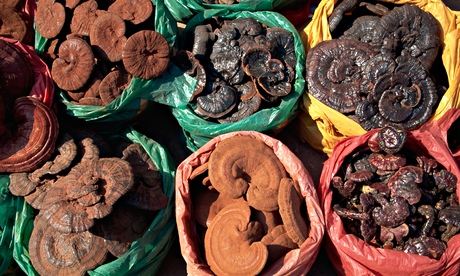
The ancient Egyptians believed eating mushrooms brought long life. While their scientific method was perhaps not entirely sound, modern scientists investigating the medicinal properties of the organism are beginning to produce some fascinating results. There are thousands of species of mushroom growing in the wild, but most studies have focused on three main varieties – reishi, maitake and shiitake.
Reishi, otherwise known as ganoderma, has been used in Chinese medicine for 2,000 years and numerous studies have investigated its much-vaunted anti-cancer and immune-boosting properties. In a paper published last year in the US's Proceedings of the National Academy of Sciences (PNAS) journal, a team of scientists linked its use to cancer-cell death. The team, from the Taiwanese research centre Academia Sinica, found that F3 polysaccharides, a type of carbohydrate molecule found in reishi mushrooms, can induce antibodies to recognise and kill antigens associated with tumours or cancer cells.
Maitake mushrooms are believed to have similar qualities. In a human trial, conducted by Memorial Sloan–Kettering Cancer Centre in 2009, maitake was shown to stimulate the immune systems of breast cancer patients. Laboratory in vitro research by Sensuke Konno, associate professor of urology at New York Medical College, found that non-toxic concentrations of the GD or PL "fractions" found in maitake mushrooms, when combined with vitamin C, not only reduced growth of bladder cancer cells by 90% in 72 hours, but were also highly effective in killing them.
But perhaps the best known of all the medicinal mushrooms is the shiitake. Not only is it a delicious ingredient, but it is also famed for its compound lentinan. Several papers have found the polysaccharide could help increase the survival rate of cancer patients, including research carried out by a team of scientists at Harbin University, China, in 2008, which found that lentinan was "beneficial in terms of increasing mean survival duration, tumour necrosis and reducing the recurrence rate".
The shiitake extract Active Hexose Correlated Compound (AHCC) is the second most popular form of alternative medicine used by cancer patients in Japan – Agaricus subrufescens, another mushroom, is the first. A study in 2011 by researchers in Texas found that AHCC may also be effective in protecting the body against viruses and infections, including flu.

Mushrooms for sale at a herbal medicine shop in China. Photograph: Prisma Bildagentur AG/Alamy
"These mushrooms have attributes you can't synthesise, because the
molecules are often too complex," says medicinal plant expert Chris
Kilham. He considers the immune value of many of these fungi to be
"critically important", and just the tip of the iceberg in terms of the
possible health benefits. He complains that many doctors are still
ignorant of their potential in modern medicine.
But while polysaccharide-K – a protein extract from the trametes versicolor fungus, or turkey tail – is already being used to boost the immune system of cancer patients in some countries including Japan, research into all fungi is still in its infancy and more trials are needed. And before you start making a shiitake stir-fry one of your five a day, Dr Kat Arney of Cancer Research UK warns against jumping to conclusions based on evidence gathered using laboratory experiments.
The problem, she explains, is that lots of things can kill cells in a lab, not just mushroom extracts. Whether it is bleach or leaving the incubator door open, there may be many reasons for the positive results. It doesn't mean they are all treatments for cancer.
"When it's something like food, people get really excited and say: 'Does it mean if I eat enough of these things, it will have this effect on me?' she says.
"It doesn't really work that way because you don't know about the dose, you don't know whether by eating something it's bio-available – meaning it can get from the inside of your tummy into your bloodstream and into the tumour in a dose that's actually relevant. That's the trouble."
Eating too many mushrooms could even damage your health because of fungi's complex mixture of chemicals. Arney adds: "When people start eating loads and loads of one thing, it's not necessarily entirely benign."
Claims by Russian scientists that the chaga mushroom, a type of fungi that grows on birch trees, can help treat patients with HIV, should also be approached with caution.
The researchers at the Vector Institute in Siberia stated in 2013 that the chaga had the potential to be developed into an antiviral medicine that could protect against the virus, as well as flu and smallpox. But the UK's National Aids Trust remains sceptical. Yusef Azad, director of policy and campaigns, says the institute's bold claims could give false hope and distract from the real issues around HIV.
Of course, a lot of useful drugs are originally derived from natural products such as plants – aspirin is the classic example, while the chemotherapy drug taxol comes from the yew tree. The key thing, Arney says, is to find out what the useful chemicals are in these fungi. But until extensive clinical trials are run, the tangible benefits of using medicinal mushrooms to protect against and treat disease remain unknown. As Arney says: "Mushrooms are more like a treasure chest that needs to be opened, rather than the cure for cancer."
-the guardian
But while polysaccharide-K – a protein extract from the trametes versicolor fungus, or turkey tail – is already being used to boost the immune system of cancer patients in some countries including Japan, research into all fungi is still in its infancy and more trials are needed. And before you start making a shiitake stir-fry one of your five a day, Dr Kat Arney of Cancer Research UK warns against jumping to conclusions based on evidence gathered using laboratory experiments.
The problem, she explains, is that lots of things can kill cells in a lab, not just mushroom extracts. Whether it is bleach or leaving the incubator door open, there may be many reasons for the positive results. It doesn't mean they are all treatments for cancer.
"When it's something like food, people get really excited and say: 'Does it mean if I eat enough of these things, it will have this effect on me?' she says.
"It doesn't really work that way because you don't know about the dose, you don't know whether by eating something it's bio-available – meaning it can get from the inside of your tummy into your bloodstream and into the tumour in a dose that's actually relevant. That's the trouble."
Eating too many mushrooms could even damage your health because of fungi's complex mixture of chemicals. Arney adds: "When people start eating loads and loads of one thing, it's not necessarily entirely benign."
Claims by Russian scientists that the chaga mushroom, a type of fungi that grows on birch trees, can help treat patients with HIV, should also be approached with caution.
The researchers at the Vector Institute in Siberia stated in 2013 that the chaga had the potential to be developed into an antiviral medicine that could protect against the virus, as well as flu and smallpox. But the UK's National Aids Trust remains sceptical. Yusef Azad, director of policy and campaigns, says the institute's bold claims could give false hope and distract from the real issues around HIV.
Of course, a lot of useful drugs are originally derived from natural products such as plants – aspirin is the classic example, while the chemotherapy drug taxol comes from the yew tree. The key thing, Arney says, is to find out what the useful chemicals are in these fungi. But until extensive clinical trials are run, the tangible benefits of using medicinal mushrooms to protect against and treat disease remain unknown. As Arney says: "Mushrooms are more like a treasure chest that needs to be opened, rather than the cure for cancer."
Langgan:
Catatan (Atom)






